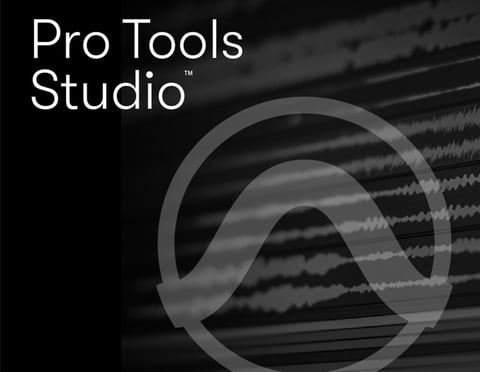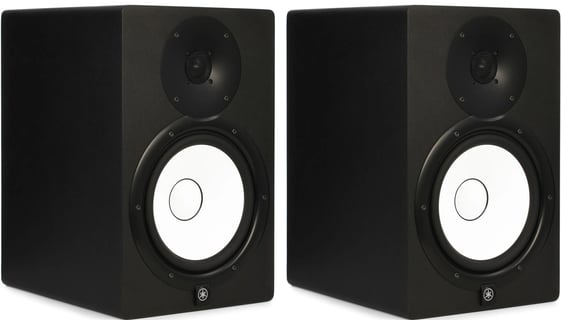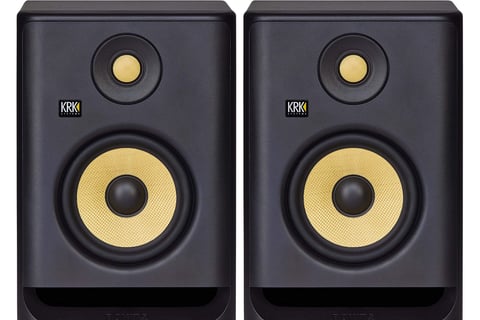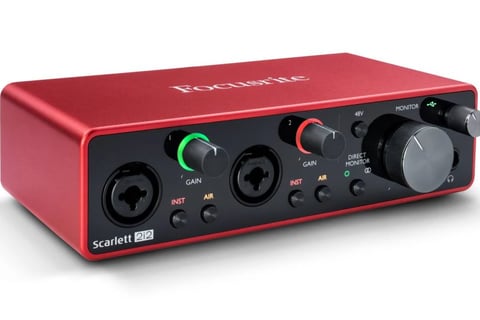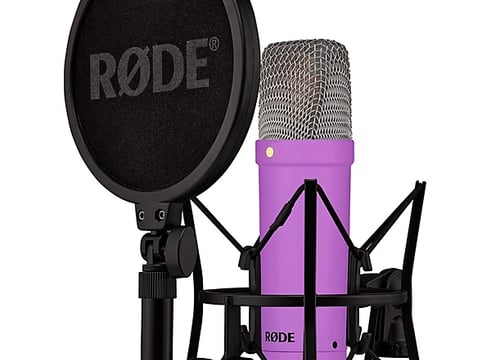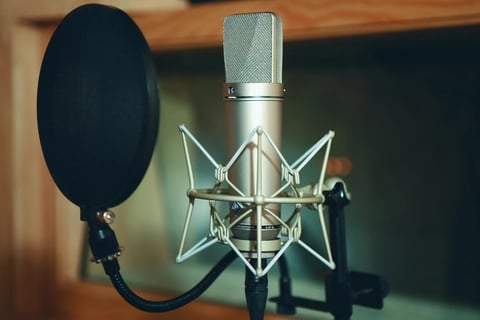5 Must-Have Studio Accessories for Beginners: Essential Gear to Jumpstart Your Recording Journey
Investing in the right studio accessories can significantly improve your audio quality and workflow efficiency. Whether you're a budding musician, podcaster, or content creator, having the proper tools at your disposal will make a substantial difference in your creative process. By prioritizing these must-have accessories, you'll be well-equipped to tackle your projects with confidence and achieve better results.
STUDIO ACCESSORIES
5 Must-Have Studio Accessories for Beginners: Essential Gear to Jumpstart Your Recording Journey
Setting up a home studio can be an exciting yet daunting task for beginners. With so many options available, it's crucial to focus on the essential accessories that will help you create high-quality content from the start. These key items will form the foundation of your studio setup, allowing you to produce professional-sounding recordings or streams.
Investing in the right studio accessories can significantly improve your audio quality and workflow efficiency. Whether you're a budding musician, podcaster, or content creator, having the proper tools at your disposal will make a substantial difference in your creative process. By prioritizing these must-have accessories, you'll be well-equipped to tackle your projects with confidence and achieve better results.
1) Rode NT1-A Microphone
The Rode NT1-A is an essential tool for any beginner's studio setup. This large-diaphragm condenser microphone offers professional-grade sound quality at an affordable price point, making it perfect for home recording enthusiasts.
You'll appreciate the NT1-A's versatility. It excels at capturing vocals, acoustic instruments, and even podcasts with remarkable clarity. The microphone's cardioid polar pattern helps focus on the sound source while reducing unwanted background noise.
One of the NT1-A's standout features is its incredibly low self-noise. At just 5 dBA, it's one of the quietest studio microphones available. This means you'll get cleaner recordings with less post-processing needed.
The NT1-A's durability is another plus. Its robust build quality ensures it can withstand the rigors of regular use in your home studio. You won't need to worry about replacing it anytime soon.
Setting up the NT1-A is straightforward. It comes with a shock mount and pop filter, helping you achieve professional results right out of the box. You'll need an audio interface with phantom power to use this XLR microphone.
For those considering alternatives, the Rode NT1 5th Generation offers both XLR and USB connectivity. This newer model provides more flexibility if you're unsure about committing to an XLR setup.
The NT1-A's balanced frequency response ensures accurate sound reproduction. You'll find it particularly flattering for vocals, adding a subtle warmth without coloring the sound too much.
2) Focusrite Scarlett 2i2 Audio Interface
The Focusrite Scarlett 2i2 is an essential audio interface for beginners setting up their home studio. This compact device allows you to connect microphones, instruments, and other audio sources to your computer for recording and playback.
With its two high-quality microphone preamps, the Scarlett 2i2 provides clear and detailed sound capture. You can easily plug in your mics or instruments using the combination XLR/TRS inputs on the front panel.
The interface features intuitive controls, including gain knobs for each input and a direct monitoring option. This allows you to hear your input signals without latency while recording.
USB-powered and bus-powered, the Scarlett 2i2 is highly portable and easy to set up. You won't need any additional power supplies, making it ideal for recording on the go.
The Scarlett 2i2 is compatible with most digital audio workstations (DAWs), ensuring seamless integration into your recording setup. It also comes bundled with creative music production software to get you started right away.
Affordable and reliable, the Scarlett 2i2 is an excellent choice for beginners looking to achieve professional-quality recordings. Its user-friendly design and solid build quality make it a popular option among home studio enthusiasts.
3) KRK Rokit 5 G4 Studio Monitors
The KRK Rokit 5 G4 studio monitors are an excellent choice for beginners looking to set up their first home studio. These monitors offer a balanced sound profile and impressive features at an affordable price point.
With a 5-inch Kevlar woofer and a 1-inch silk dome tweeter, the Rokit 5 G4 delivers clear and accurate audio across a wide frequency range. You'll be able to hear details in your mixes that you might miss with lower-quality speakers.
One standout feature of the Rokit 5 G4 is its built-in DSP-driven Graphic EQ. This allows you to adjust the monitor's sound to your room's acoustics, ensuring more accurate playback in various environments.
The monitors also include a front-firing port design, which helps reduce bass distortion and provides better low-end extension. This is particularly useful when you're working in smaller spaces or near walls.
You'll appreciate the visual feedback provided by the backlit KRK logo. It serves as a power indicator and can help you quickly identify if your monitors are active.
Frequency response ranges from 43Hz to 40kHz, giving you a broad spectrum of sound to work with. This range is impressive for monitors in this size and price category.
The Rokit 5 G4's build quality is robust, with a professional-looking design that will fit well in any studio setup. Their compact size makes them suitable for smaller spaces without compromising on sound quality.
4) Yamaha HS8 Studio Monitors
Accurate sound reproduction is crucial for any home studio setup. The Yamaha HS8 studio monitors are an excellent choice for beginners seeking professional-grade audio quality.
These monitors feature an 8-inch cone woofer and a 1-inch dome tweeter, delivering powerful and precise sound across a wide frequency range. You'll appreciate the clarity and detail they provide when mixing and mastering your tracks.
The HS8s come with room control and high-trim response controls, allowing you to adjust the sound to fit your specific studio environment. This customization ensures you get the most accurate representation of your audio.
While these monitors are larger and heavier than some alternatives, their size contributes to their impressive low-end response. You'll hear bass frequencies with remarkable accuracy, which is essential for balancing your mixes.
The Yamaha HS8s are known for their flat, uncolored sound. This characteristic makes them ideal for critical listening and helps you make informed decisions about your audio production.
As powered monitors, the HS8s don't require an external amplifier. This feature simplifies your studio setup and ensures optimal performance without additional equipment.
By investing in Yamaha HS8 studio monitors, you're equipping your home studio with a professional-grade tool that will help you create better mixes and improve your overall audio production skills.
5) Avid Pro Tools Software
Avid Pro Tools is an essential tool for any aspiring music producer or audio engineer. This industry-standard digital audio workstation (DAW) offers a comprehensive suite of features for recording, editing, and mixing audio.
As a beginner, you'll find Pro Tools intuitive and user-friendly. The software provides a solid foundation for learning audio production techniques and workflows used in professional studios.
Pro Tools comes in different versions to suit various needs and budgets. The Pro Tools Flex edition is designed for large facilities and post-production professionals, offering advanced features and hardware bundles.
For those just starting out, the standard version of Pro Tools provides ample functionality. You'll have access to a wide range of virtual instruments, effects plugins, and editing tools to create professional-sounding tracks.
Pro Tools' interface is customizable, allowing you to tailor your workspace to your preferences. This flexibility helps streamline your workflow as you become more familiar with the software.
One of Pro Tools' strengths is its robust recording capabilities. You can easily capture multiple audio sources simultaneously, making it ideal for recording live instruments or full bands.
The software also excels in post-production work, offering advanced features for sound design, dialogue editing, and audio-for-video synchronization. These tools will prove invaluable as you expand your skills beyond music production.
